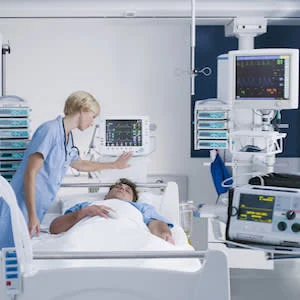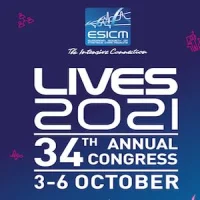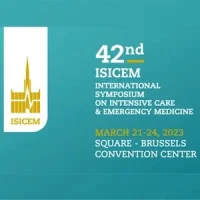Over the last fifty years, haemodynamic monitoring techniques have progressed quite significantly, moving from bulky sphygmographs to invasive catheters to noninvasive digital monitors that provide continuous values of multiple haemodynamic variables. Haemodynamic monitoring concepts have also changed and have progressed from global macrohaemodynamic monitoring towards a more regional, microcirculatory perfusion approach and from maximal monitoring to an individualised monitoring approach.
Here is a quick overview of the key changes in haemodynamic monitoring over the last fifty years:
- Initially, monitoring a patient’s haemodynamic status concentrated primarily on measuring arterial pressure. However, as technology advanced, more advanced haemodynamic assessment strategies were incorporated to better characterise different types of shock.
- There was a time when cardiac output was measured using indicator dilution techniques that were complicated and cumbersome. The development of the balloon-tipped pulmonary artery catheter (PAC) revolutionised the traditional approach of monitoring cardiac output.
- The emphasis in haemodynamic monitoring has progressively moved from central to peripheral circulation. The pendulum has also shifted towards a more personalised approach based on each patient’s individual needs.
- Falling oxygen tissue concentrations in shock can result in anaerobic metabolism with the increased formation of lactate, making blood lactate concentration a useful index of altered tissue perfusion. This realisation was an important part of the evolution of haemodynamic monitoring, and the concept of measuring serial blood lactate concentrations to monitor patient response to treatment has emerged over the years. A rapid decrease in lactate concentrations is associated with a better prognosis in various groups of critically ill patients. The development of bedside analysers has now simplified the measurement of lactate concentrations, and the assessment of serial blood lactate levels is helpful to assess the patient’s response to therapy.
- There is also increased interest in monitoring regional blood flow, but this can be difficult in the clinical setting. Measurement of blood flow in the hepatosplanchnic circulation can be quite invasive. Gastric tonometry is a minimally invasive technique that became quite popular in the 90s, although there were inconsistent results that led to this approach being abandoned. However, assessment of peripheral perfusion still remains an important component of the evaluation of critically ill patients.
- Restoring and maintaining adequate tissue oxygenation still remains an important goal of haemodynamic resuscitation and management. Several methods exist to explore microcirculation including laser Doppler, intravital micro video-surface microscopy, microvideo-surface microscopy and nail capillarovideoscopy. Handheld vital microscopy has been the most widely studied approach and is used to assess the effects of various interventions of microcirculation.
There has been a move towards less invasive techniques. The use of PAC has decreased worldwide over the last two decades. Gastric tonometry has been abandoned. The greater availability and use of echo-Doppler techniques and other newer and less invasive techniques are now more prevalent.
Medical and scientific technology continues to advance. In future, the use of Artificial Intelligence is likely to increase. The integration of feedback control systems and artificial intelligence into medical systems could improve adherence to prescribed treatment regimens and protocols and could also enable rapid adaptation to new therapeutic strategies. Personalised titration of drugs may be administered by automated systems in the future. Echocardiography probes will become smaller and more widely available.
Source: Critical Care Medicine
Image Credit: iStock










